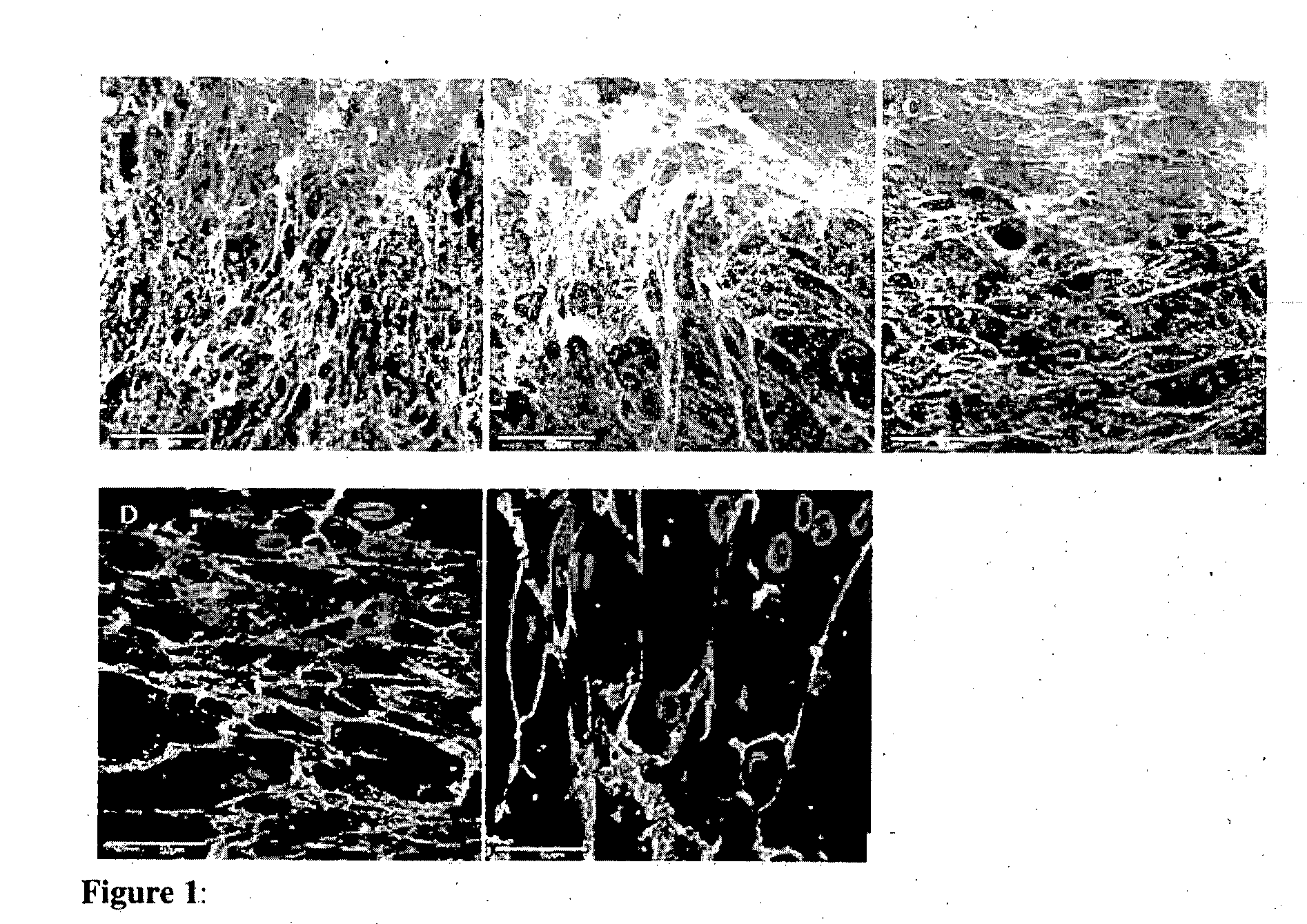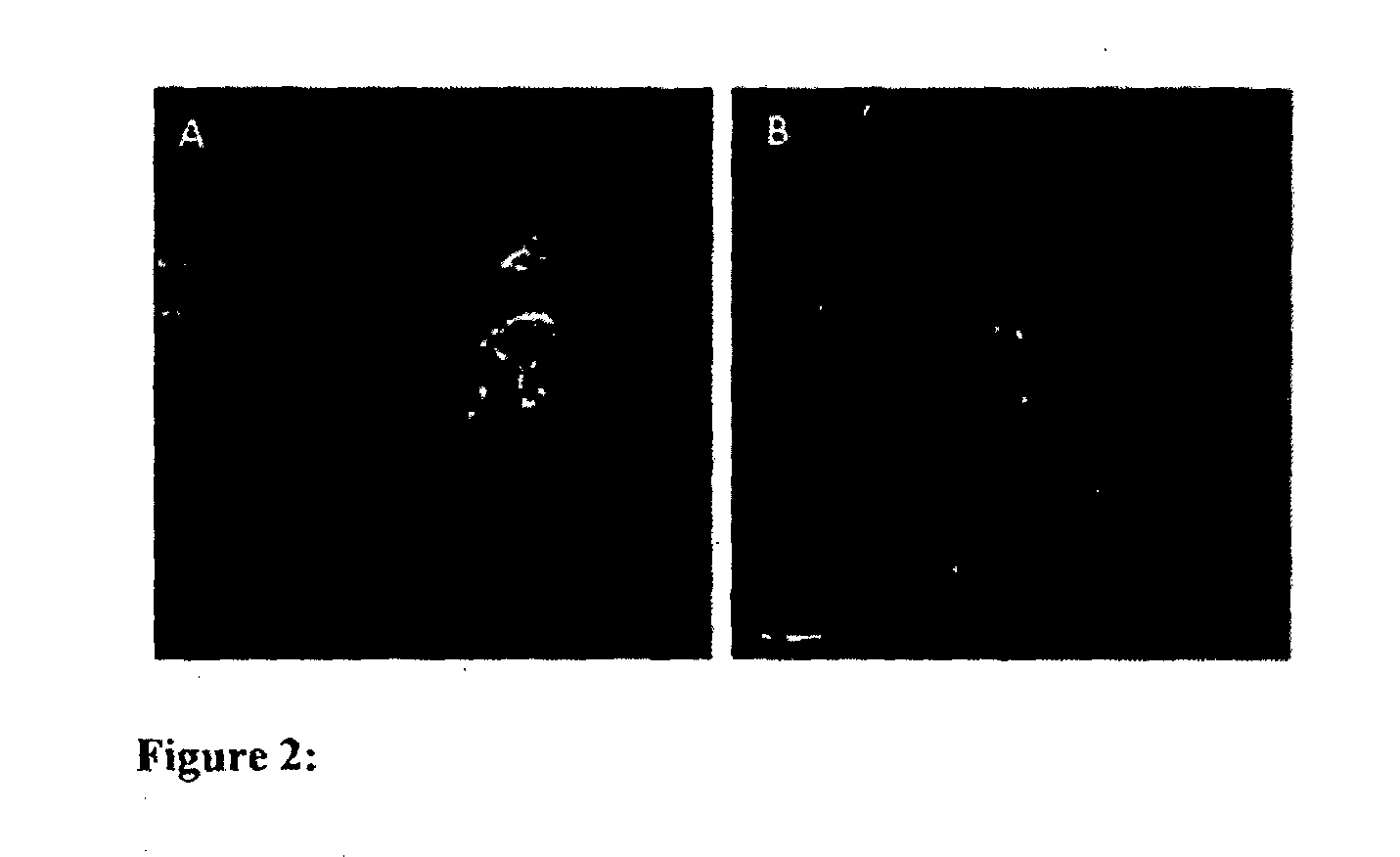In Vivo Synthesis of Elastic Fiber
a technology of elastic fiber and in vivo synthesis, which is applied in the direction of drug compositions, antinoxious agents, peptide/protein ingredients, etc., can solve the problems of loss of tissue structure and/or function, unable to achieve the goal, and the provision of synthetic tropoelastin to adult tissues should not enable adult cells to synthesise elastic fiber from synthetic tropoelastin, etc., to achieve the effect of minimizing the degeneration of an elastic profile of a
- Summary
- Abstract
- Description
- Claims
- Application Information
AI Technical Summary
Benefits of technology
Problems solved by technology
Method used
Image
Examples
example 1
In Vitro Assay System for Elastic Fiber Synthesis
[0166]Materials and Methods
[0167]a) Cells
Age ofCell codeCell typedonorSourceNHF8909Primary humanNeonatalUniversity ofskin fibroblastsQueensland, AustraliaGM3348Human skin10 yoCoriell ResearchfibroblastsInstitute, NJ, USA230209APrimary human31 yoAnzac Researchskin fibroblasts (burnsInstitute, Australiapatient)142BRHuman skin51 yoEuropean Collection offibroblastsCell CulturesAG04064Human skin92 yoCoriell ResearchfibroblastsInstitute, NJ, USAPig 10-10Primary porcine10University ofskin fibroblastsweeksQueensland, AustraliaRAB-9Rabbit skinAdultEuropean Collection offibroblastsCell Cultures3785Primary human28 yoWoolcock Institute ofairway smooth muscleMedical Research, cellsAustralia(lung transplantpatient)3791Primary human59 yoWoolcock Institute ofairway smooth muscleMedical Research,cellsAustralia(lung resectionpatient)
[0168]b) Cell Culture
[0169]Cells were cultured in Dulbecco's Modified Eagle Medium High Glucose (DMEM; Invitrogen) contai...
example 2
Study to Assess the Treatment of Human Skin using an Elastin Injectable Skin Rejuvenation Product
[0215]Methods:
[0216]A clinical study was undertaken using a formulation of tropoelastin lightly cross-linked with a derivatised hyaluronic acid (as described in PCT / AU2011 / 001503, in particular Example 3 and Example 6) compared to Restylane Vital Light (RVL—12 mg / ml hyaluronic acid cross-linked with BDDE, Q-Med, Australia). Participants were treated on the skin on the inside of the upper arm by implanting the product into the dermis by fine needle injection. The upper arm was chosen for the study as this is an area of skin which is not typically exposed to sun light and so presents as healthy undamaged skin tissue. The study aimed to assess the impact of the products on skin thickness and texture including elasticity and to gather subjective patient feedback on the appearance, naturalness and smoothness of the treated skin site.
[0217]Healthy subjects were recruited to the study and follo...
PUM
| Property | Measurement | Unit |
|---|---|---|
| volume | aaaaa | aaaaa |
| concentration | aaaaa | aaaaa |
| concentration | aaaaa | aaaaa |
Abstract
Description
Claims
Application Information
 Login to View More
Login to View More - R&D
- Intellectual Property
- Life Sciences
- Materials
- Tech Scout
- Unparalleled Data Quality
- Higher Quality Content
- 60% Fewer Hallucinations
Browse by: Latest US Patents, China's latest patents, Technical Efficacy Thesaurus, Application Domain, Technology Topic, Popular Technical Reports.
© 2025 PatSnap. All rights reserved.Legal|Privacy policy|Modern Slavery Act Transparency Statement|Sitemap|About US| Contact US: help@patsnap.com



